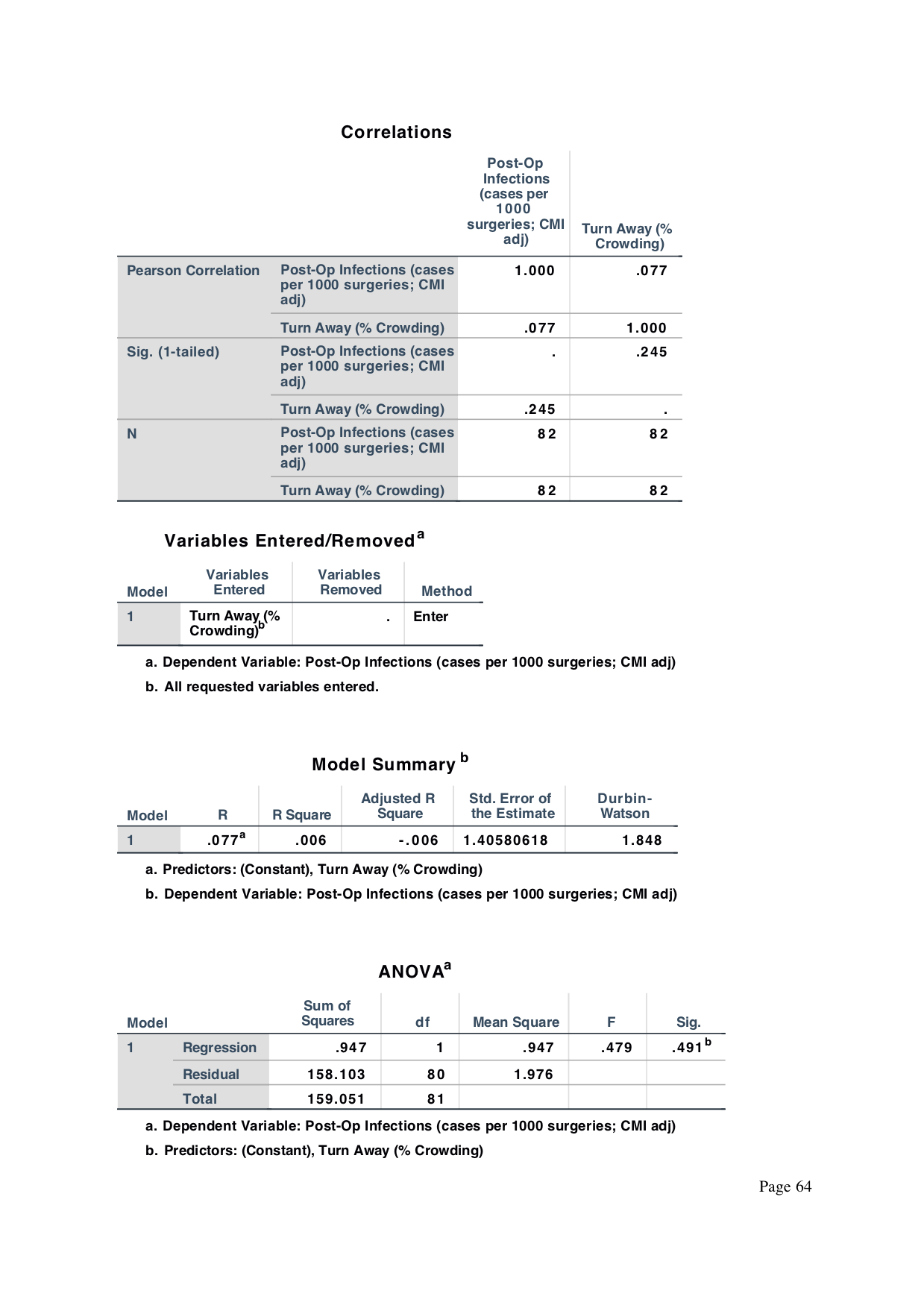Background: Limited hospital capacity continues to be one of the major challenges to health care in hospitals in the US and the developed world. This problem manifests in a variety of ways in multiple settings starting with prolonged emergency room wait times and left without being seen rates, prolonged ED boarding time, and elective surgery cancellations. Hospital leaders struggle with the increasing costs of hospital expansions: one estimate of the cost of adding a single bed to a hospital is about 1 million dollars a year, hence many hospitals focus on increasing efficiency in patient throughput, early discharges with outpatient F/U, and reducing readmissions to avoid the cost of expanding inpatient beds. Crowding (turn away based on Queuing Theory) is a function of hospital size and rises exponentially compared to the linear rise in capacity. At the same capacity, larger hospitals are less crowded than smaller hospitals. The effect of crowding on patient outcomes is unknown.
Methods: We sought to assess whether hospital crowdedness predicts clinical outcomes for hospitalized patients. Hospital size was obtained from the American Hospital Association AHA Survey and Vizient database. Average daily occupancy for each hospital was calculated using total bed days from both observation and inpatient discharges. An Erlang calculator was used to determine the average daily crowding (turn away) for each hospital. We then obtained risk adjusted hospital outcome rates for 250 academic hospitals from the Vizient database Statistical analysis was performed using univariate linear regression.
Results: Increased hospital crowding was associated with increased 30-day readmission (P Value 0.038, Coefficient=0.014) , postoperative wound complications( P Value= 0.005 Coefficient= 0.002), CAUTI rates ( P Value= 0.03 Coefficient= 0.006) , stroke not present on admission ( P Value .047 Coefficient = 0.002) , and postoperative AKI (P Value = 0.05 coeefficient= 0.001). Other important outcome measures including mortality index, AMA discharge rate, infection readmission rate, and C diff rate, were significantly worse in crowded hospitals, as defined by a turn away rate of > 0.1%, compared to non-crowded hospitals, however, there was no statistical correlation with progressive crowding.
Conclusions: The more crowded hospitals are, the higher the rates of certain complications.
Some outcome measures are worse in crowded hospitals in general (but they do not correlate with progressive crowding.
The specific factors that could be worsening patient outcomes in more crowded hospitals are unknown.
More studies are needed to explore the effects of hospital crowding on patient outcomes.
.png)

